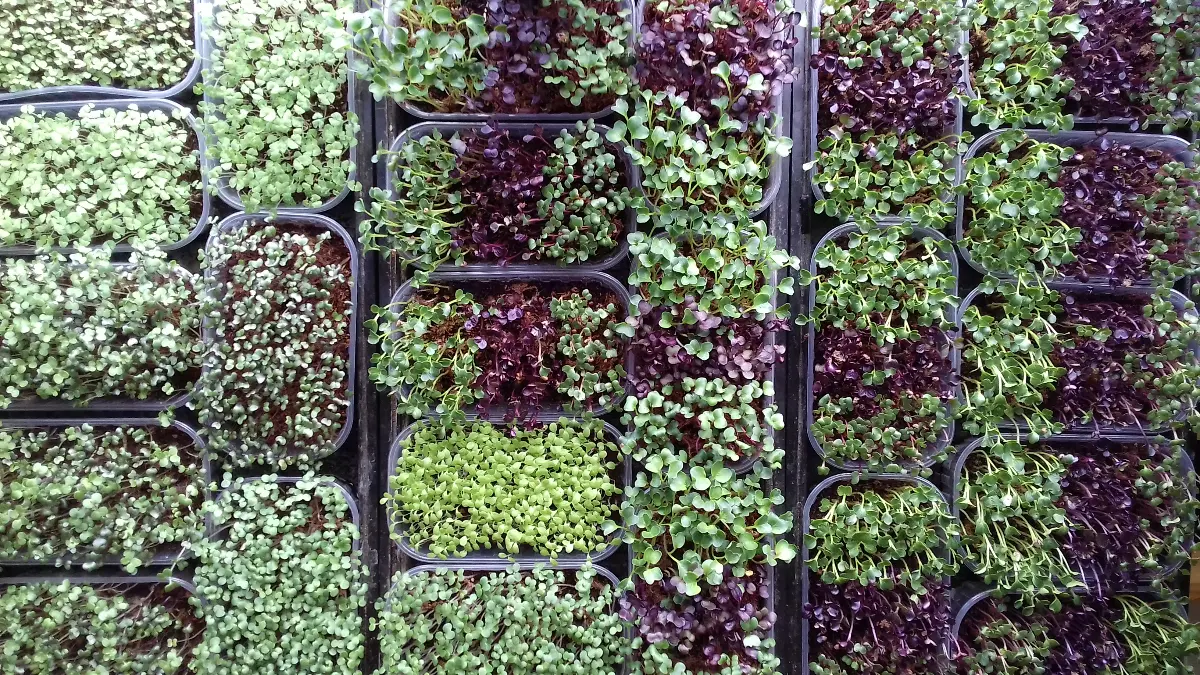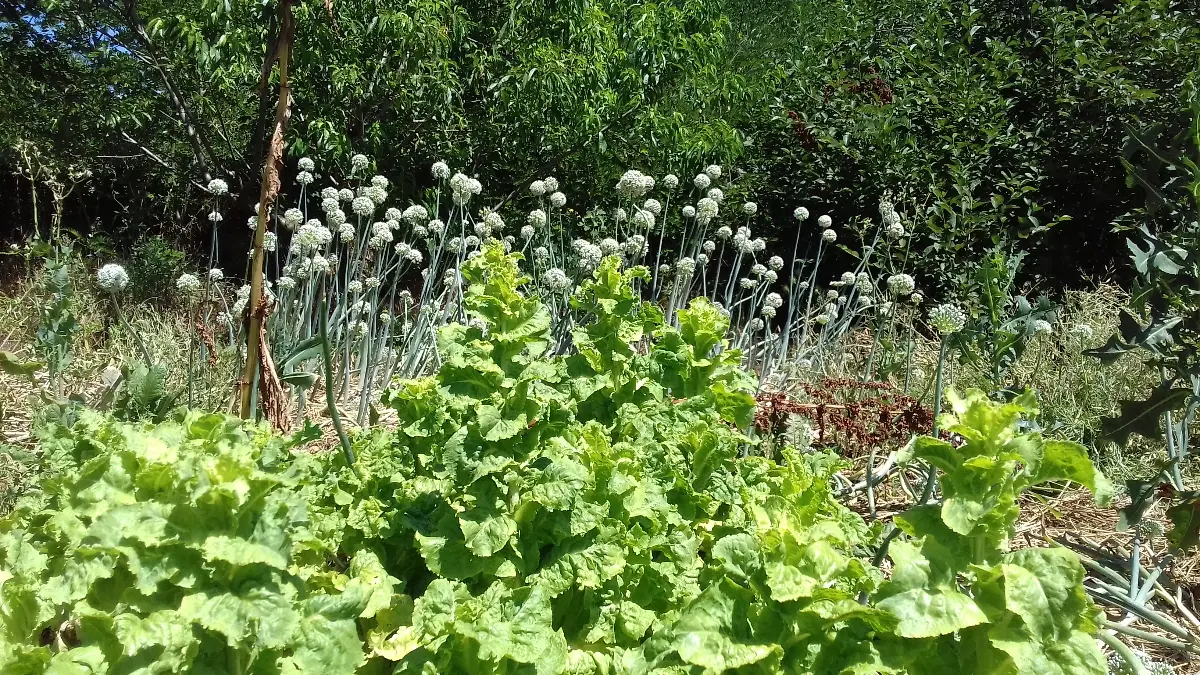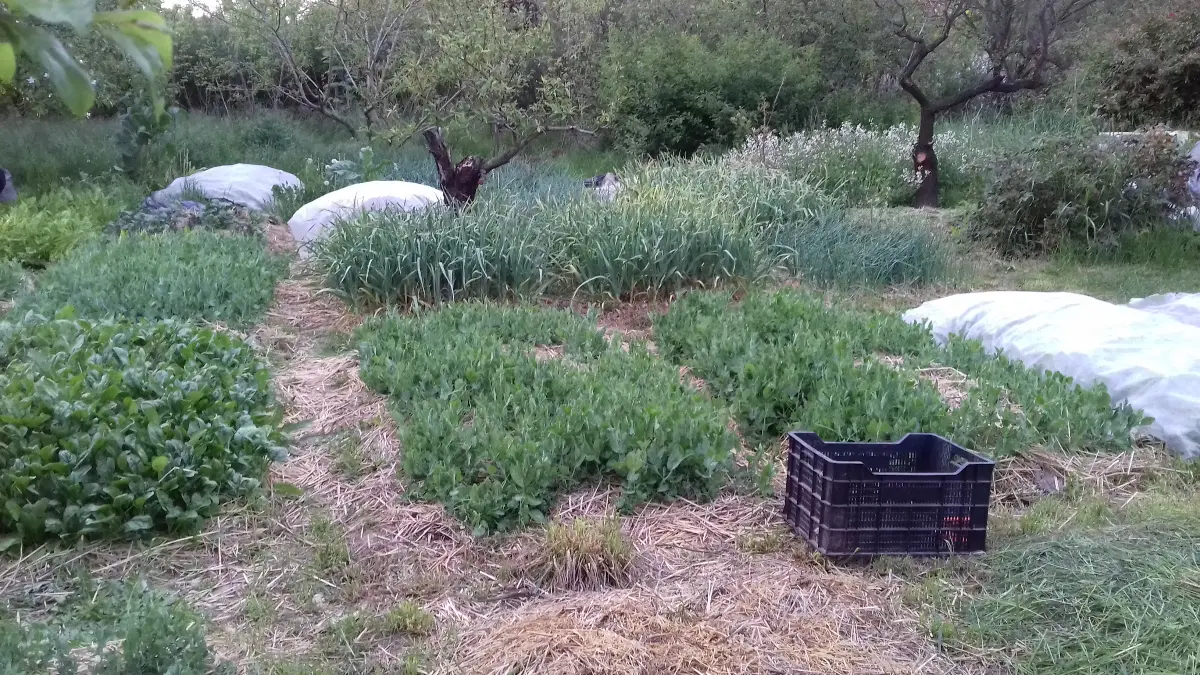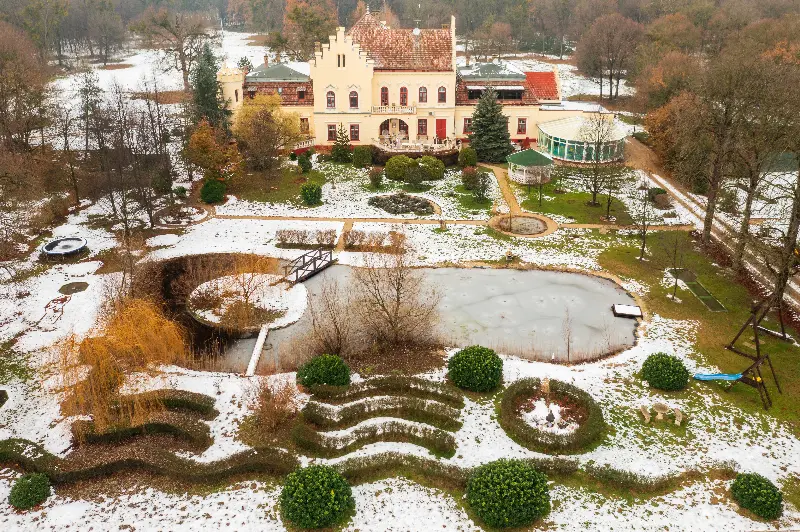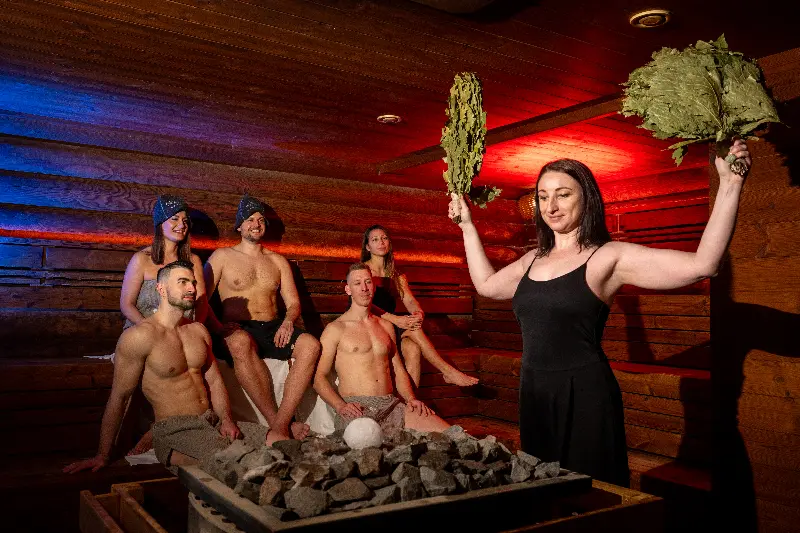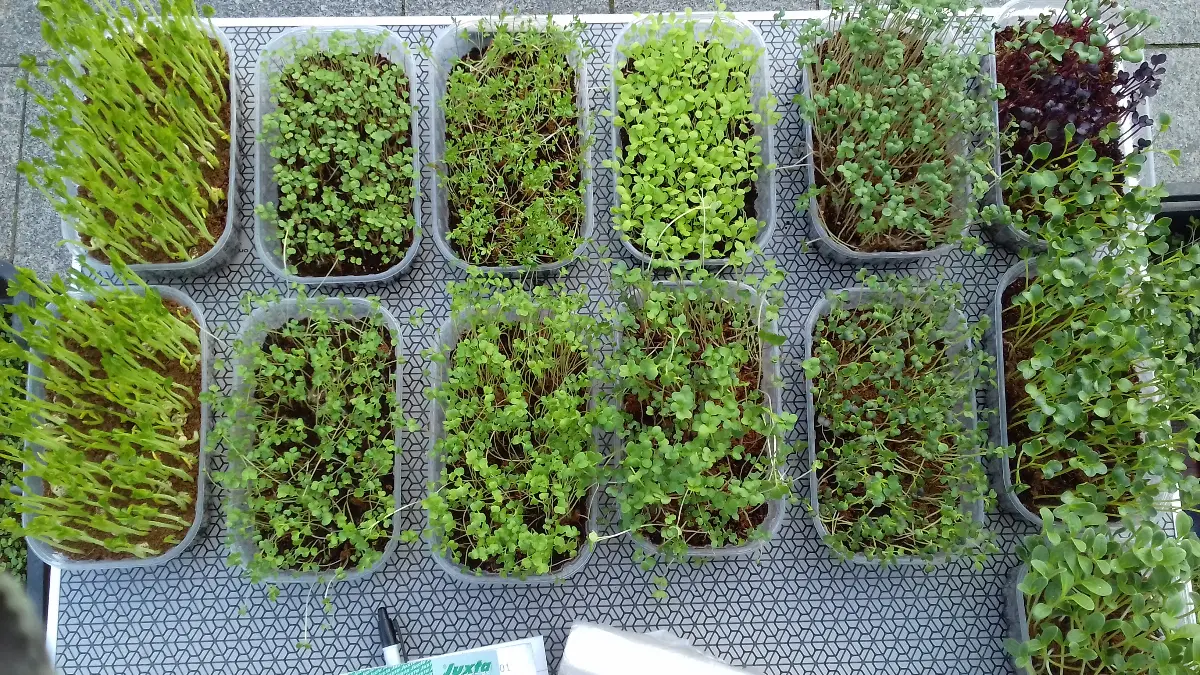
Helyszín címkék:
‘Nosbácsi (Uncle János), the uncrowned king of microgreens in Pécs
Szabó Sára
How does a librarian become a micro vegetable grower?
I also did some of the “behind the scenes”, office and computer work in the library. I already felt the need to spend more time outdoors, so I bought a garden on the outskirts of the city. Unfortunately, the hobby garden did not yield what I had counted on, so I started cultivating in my cousin's land in Kővágószőlős. A few years later, I rented a garden in the Zsebedomb area from the city trustee, and when I “outgrew” it, I moved on to a bigger one: the Szigeti-tanya (Island Farm). The lands of the city trustee have great potential, but a big problem is that none of the gardens I have rented had or have water, which is a basic necessity in horticulture. Thus, my products for the market were not piling up. I started searching and researching on the internet, and I came across the increasingly-fashionable microgreens. They are grown indoors, in a controlled environment, so the farmer has a short growing time and greater certainty of getting the crop. You could say it was the initial failures that led me to microgreens.
What is the difference between microgreens, sprouts and permaculture?
Microgreens are much less known in Hungary than, for example, sprouts. The latter “ripens” in 3-5 days and is eaten whole, while microgreens take 7-14 days and only the parts above ground are edible. Permaculture, on the other hand, is a form of organic farming: a very carefully designed system that aims to resemble natural flora. The Anglo-Saxon “permanent” in its name refers to permanence. Think of it as a natural environment where micro-organisms, vegetation, fungi and animals all play their part at different levels; though, farmers also produce permaculture for human consumption. So, it is not just humans who benefit from the goodness of nature, but everyone involved in permaculture.
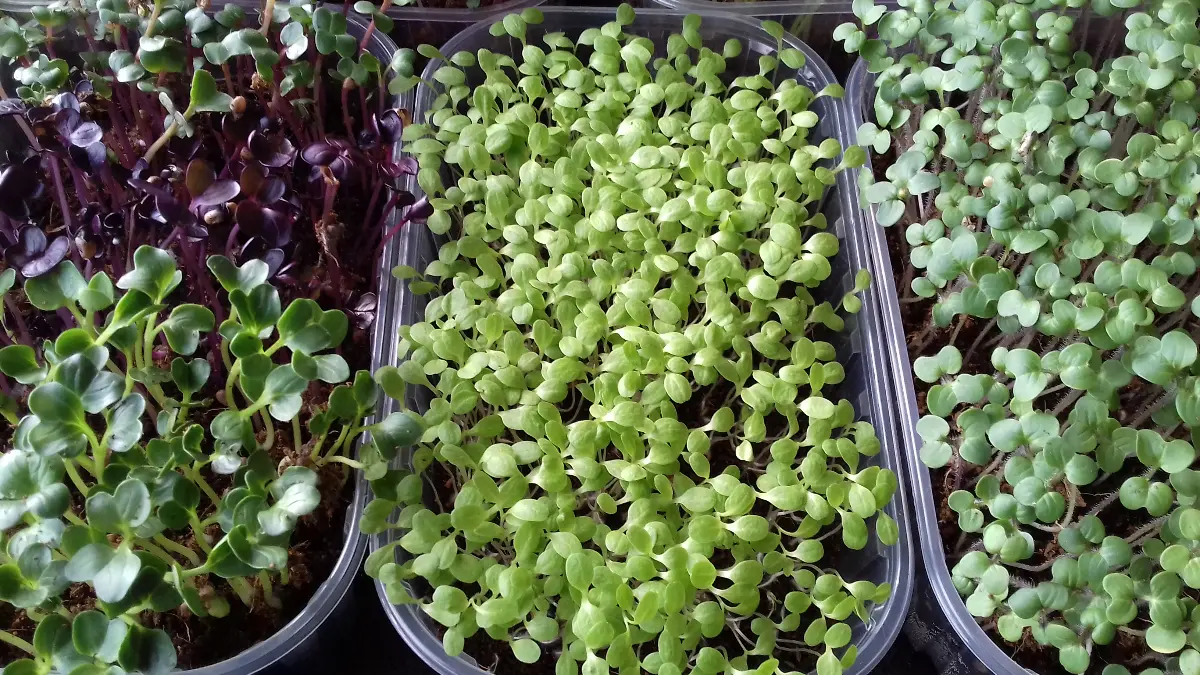
Micro pak choi, micro peas and mini broccoli: very exciting items, what else is in 'Nosbácsi's (Uncle János) range?
There are some that I have on hand all the time, but there are also microgreens that I make when I feel like it or when there is a demand for them. Many of my products are related to the cabbage family: radish, rucola, kohlrabi, savoy cabbages, pak choi, mizuna, mustard, red cabbage. Besides them, sweet fennel, turmeric, parsley, borage, perilla, basil and chia are also available. My most popular products are peas, radishes, mustard and broccoli; these are some of the items from the permanent supply.
How should we incorporate microgreens into our daily diet?
They are best eaten raw, as they retain their beneficial effects when they are not exposed to heat. They are also perfect in a salad, on a sandwich, added to buttercreams or quark cheese spreads. Peas as a microgreen, for example, can really spice up traditional boiled rice and peas. In fact, it is well known that these edible seedlings contain a much higher concentration of valuable nutrients such as antioxidants, minerals and vitamins than adult plants. Furthermore, although I have no knowledge of dietetics, certain microgreens are thought to have various beneficial effects, for example broccoli can help prevent and cure cancer.
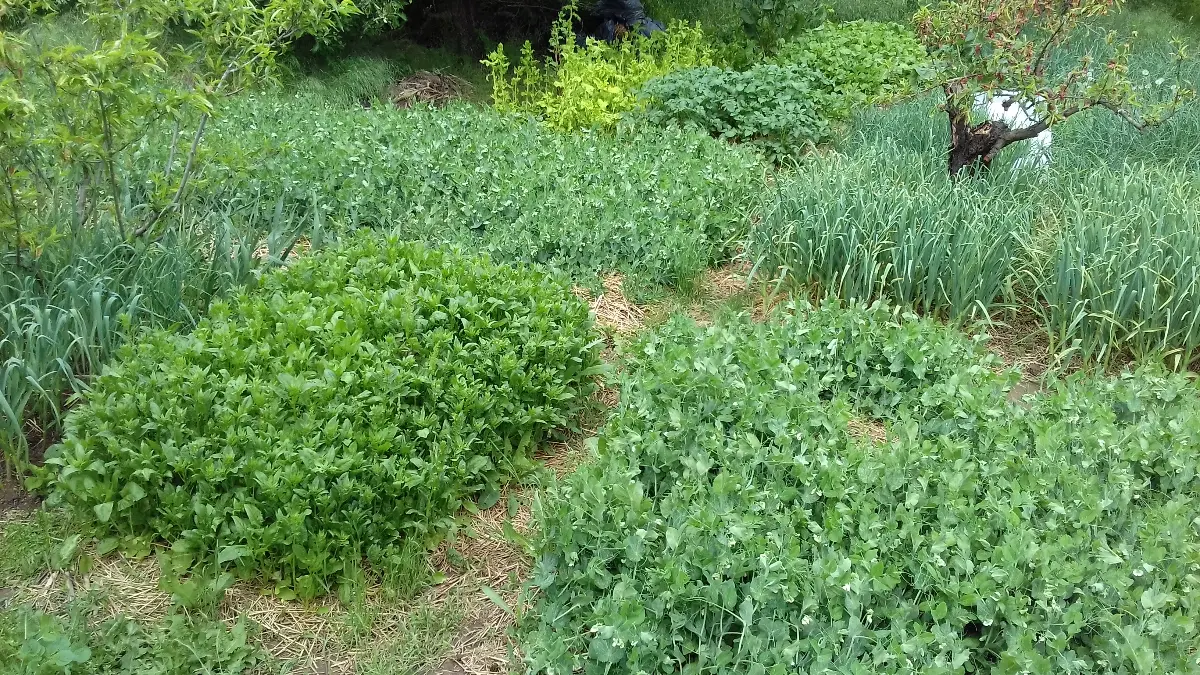
Are there any big plans regarding microgreens?
For the time being, I am maximising the use of space for microgreens, and I plan to experiment with a permaculture ethic in the outdoor garden, with a so-called food forest. We will see how it turns out.
